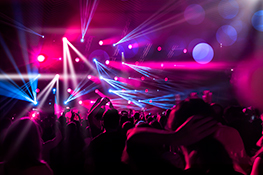LED Profile Lights: A 2025 Buyer’s Guide & Comparison
Understanding LED Profile Lights
LED profile lights have revolutionized stage and studio lighting. Their compact size, energy efficiency, and exceptional color rendering capabilities make them a top choice for professionals and amateurs alike. But with a vast array of options available, choosing the right LED profile light can feel overwhelming. This comprehensive buyer’s guide will help you navigate the market and select the perfect fixture for your needs in 2025.
Key Features to Consider
Brightness and Lumen Output
Lumen output directly impacts the intensity of your light. Consider the size of your stage or studio and the distance between the light and your subject. Higher lumen outputs are necessary for larger spaces or when illuminating from further away. Look for specifications clearly stating the lumen output at a specific color temperature.
Color Temperature and CRI
Color temperature is measured in Kelvin (K) and determines the “warmth” or “coolness” of the light. Lower Kelvin values (e.g., 2700K) produce warmer, more amber light, while higher values (e.g., 5600K) produce cooler, bluer light. CRI (Color Rendering Index) measures how accurately a light source renders colors. A higher CRI (ideally above 90) is crucial for accurate color reproduction on stage or in the studio.
Color Mixing and Control
Many modern LED profile lights offer advanced color mixing capabilities, allowing you to create a wide range of colors and shades. Consider features like CMY (Cyan, Magenta, Yellow) or RGB (Red, Green, Blue) color mixing, as well as the ability to adjust the hue, saturation, and intensity of the light. Digital control via DMX (Digital Multiplex) is essential for complex lighting designs and automated sequences. Look for features like wireless DMX control for increased flexibility.
Optics and Beam Angle
The optics of the profile light determine the shape and size of the beam. A narrow beam angle is ideal for focused spotlights, while a wider beam angle is suitable for broader wash effects. Adjustable beam angles provide greater flexibility, allowing you to adapt to different lighting scenarios. Consider the quality of the lenses and the overall precision of the beam shape.
Durability and Build Quality
Investing in a durable and well-built profile light is crucial for longevity. Look for fixtures made from robust materials, with effective heat dissipation mechanisms to prevent overheating. Consider the overall weight and portability of the light, especially if you need to transport it frequently.
Power Consumption and Efficiency
LED profile lights are inherently energy-efficient, but comparing wattage and lumen output will allow you to assess their relative efficiency. Lower wattage for a given lumen output indicates better energy efficiency.
Top LED Profile Light Brands and Models (2025)
This section would feature a detailed comparison table listing specific models from leading brands, highlighting their key features, pricing, and pros and cons. (Note: This section would require up-to-date market research and would be populated with specific product details.)
Choosing the Right LED Profile Light for Your Needs
Before making a purchase, carefully consider your specific requirements. What type of performances or productions will you be using the light for? What is your budget? What features are essential, and which are optional? Answering these questions will help you narrow down your options and choose the perfect LED profile light for your needs.
Conclusion
The right LED profile light can dramatically enhance your stage or studio productions. By considering the key features discussed in this guide, you can make an informed decision and invest in a fixture that will serve you well for years to come. Remember to check out the detailed comparison table (mentioned above) for specific recommendations. Happy lighting!


 Auditorium Construction Services
Auditorium Construction Services 